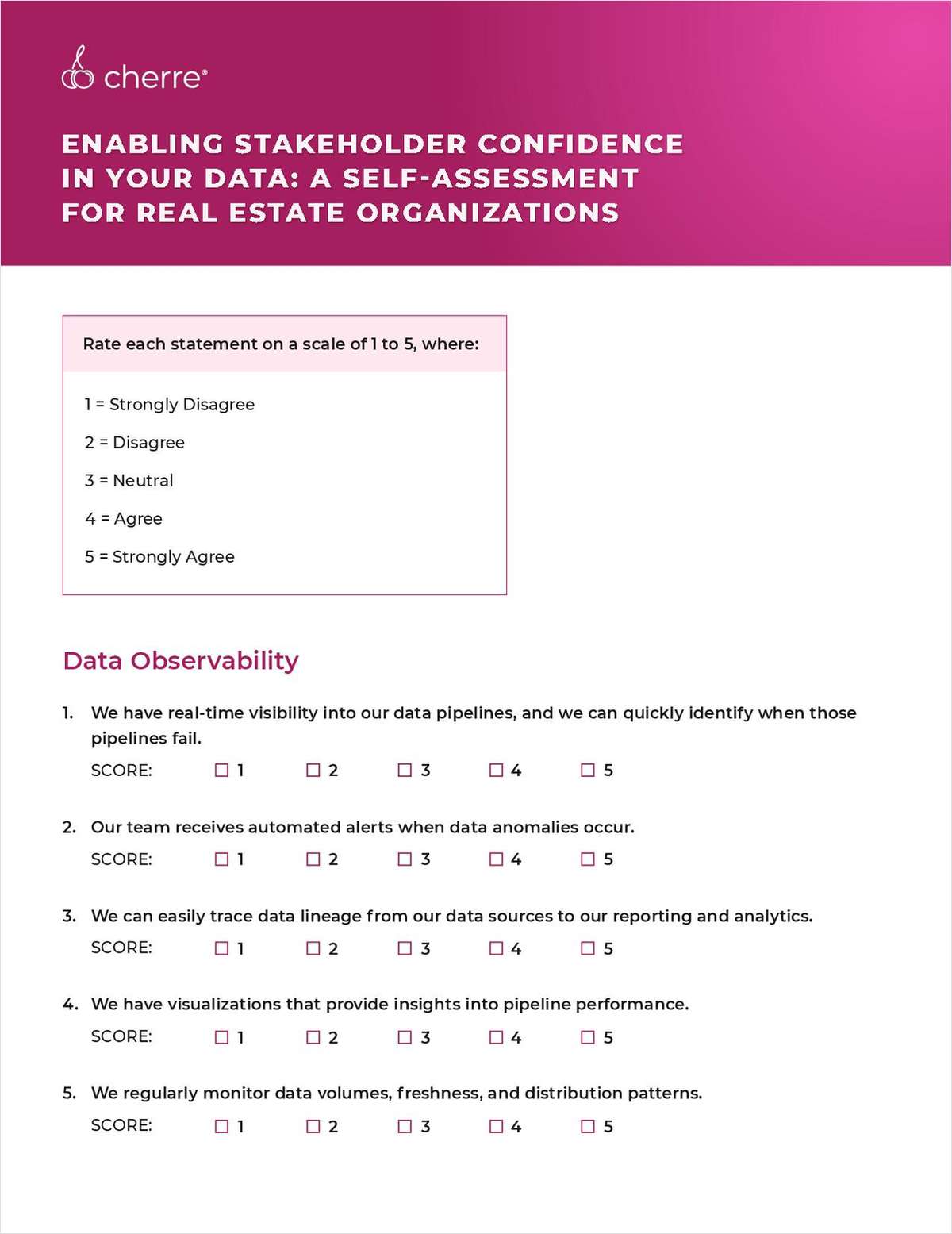ATLANTA—Lenders today are not as loose as they were two years ago. Indeed, the market continues to tighten. Still, it's nothing like the Great Recession nightmares.
Hugh Allen, CRE regional director at TD Bank, has his finger on the pulse of commercial real estate lending trends in the Southeast. GlobeSt.com caught up with him to get his insights into the trends opportunities, challenges and hot spots in this exclusive interview.
GlobeSt.com: What trends are you seeing in commercial lending in the Southeast?
Allen: Based on TD Bank's experience in some of the top Southeast markets—Raleigh-Durham, Charlotte, Atlanta and Charleston—we're seeing most lenders be more selective in their commercial real estate lending process due to the amount of demand for construction loans, particularly with multifamily projects.
This is a direct result of the areas rapid population growth and anticipation for continued job growth. We anticipate that growth in the Southeast region will continue into 2018, as many major companies—such as similarly to Boeing, MET Life, State Farm, Sealed Air and Mercedes Benz—migrate South. The heightened selectivity by lenders has led to an increase in equity requirements for deals related particularly to the multifamily market.
GlobeSt.com: What are the biggest challenges for borrowers in this climate?
Allen: The greatest challenge for borrowers in the Southeast is securing necessary approvals and entitlements. Borrowers need to navigate the changing landscape of municipality approvals with the pressure of population growth.
GlobeSt.com: What types of projects are winning funding at this stage in the cycle?
Allen: We're finding that there is an increase in activity in e-commerce- and transportation-related manufacturing in the Southeast, driving growth in the industrial distribution market. Again, overall population growth in the top metro markets is causing increased e-commerce, and space is needed for distribution centers.
(Experts are reporting a growing need for bridge loans under the $15 million mark.)
We've also seen emerging demand in areas including Charleston and Savannah for proximity to these two high volume, growing ports as they become ready to receive Panamax shipping vessels. From a lending perspective, greater access to equity, a strong track record, and support from a strong sponsor helps projects win funding.
GlobeSt.com: Any other comments?
Allen: At TD Bank, we're seeing more institutional investment interest in this region than ever before. There seems to be a trend toward more mixed-use projects where apartments/grocery anchored retail and to a lesser extent, office are combined to create “work-stay-play” environments. These projects seem to have a somewhat easier time attracting capital. They are even more prevalent at transit oriented development locations. State and municipal leaders should monitor the regional transportation, education and infrastructure needs to support continued growth.
Should you consider working with a private lender? Here's one take.
ATLANTA—Lenders today are not as loose as they were two years ago. Indeed, the market continues to tighten. Still, it's nothing like the Great Recession nightmares.
Hugh Allen, CRE regional director at TD Bank, has his finger on the pulse of commercial real estate lending trends in the Southeast. GlobeSt.com caught up with him to get his insights into the trends opportunities, challenges and hot spots in this exclusive interview.
GlobeSt.com: What trends are you seeing in commercial lending in the Southeast?
Allen: Based on TD Bank's experience in some of the top Southeast markets—Raleigh-Durham, Charlotte, Atlanta and Charleston—we're seeing most lenders be more selective in their commercial real estate lending process due to the amount of demand for construction loans, particularly with multifamily projects.
This is a direct result of the areas rapid population growth and anticipation for continued job growth. We anticipate that growth in the Southeast region will continue into 2018, as many major companies—such as similarly to
GlobeSt.com: What are the biggest challenges for borrowers in this climate?
Allen: The greatest challenge for borrowers in the Southeast is securing necessary approvals and entitlements. Borrowers need to navigate the changing landscape of municipality approvals with the pressure of population growth.
GlobeSt.com: What types of projects are winning funding at this stage in the cycle?
Allen: We're finding that there is an increase in activity in e-commerce- and transportation-related manufacturing in the Southeast, driving growth in the industrial distribution market. Again, overall population growth in the top metro markets is causing increased e-commerce, and space is needed for distribution centers.
(Experts are reporting a growing need for bridge loans under the $15 million mark.)
We've also seen emerging demand in areas including Charleston and Savannah for proximity to these two high volume, growing ports as they become ready to receive Panamax shipping vessels. From a lending perspective, greater access to equity, a strong track record, and support from a strong sponsor helps projects win funding.
GlobeSt.com: Any other comments?
Allen: At TD Bank, we're seeing more institutional investment interest in this region than ever before. There seems to be a trend toward more mixed-use projects where apartments/grocery anchored retail and to a lesser extent, office are combined to create “work-stay-play” environments. These projects seem to have a somewhat easier time attracting capital. They are even more prevalent at transit oriented development locations. State and municipal leaders should monitor the regional transportation, education and infrastructure needs to support continued growth.
Should you consider working with a private lender? Here's one take.
Want to continue reading?
Become a Free ALM Digital Reader.
Once you are an ALM Digital Member, you’ll receive:
- Breaking commercial real estate news and analysis, on-site and via our newsletters and custom alerts
- Educational webcasts, white papers, and ebooks from industry thought leaders
- Critical coverage of the property casualty insurance and financial advisory markets on our other ALM sites, PropertyCasualty360 and ThinkAdvisor
Already have an account? Sign In Now
*May exclude premium content© 2024 ALM Global, LLC, All Rights Reserved. Request academic re-use from www.copyright.com. All other uses, submit a request to [email protected]. For more information visit Asset & Logo Licensing.









